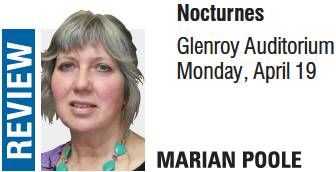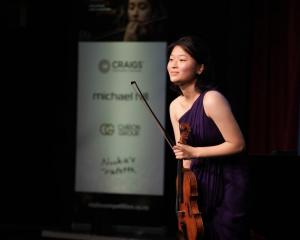
Liu’s pairing of items highlighted the composers’ similarities as well as their distinctions from each other.

There were 16 works and many highlights but space here allows only a glimpse of those that really hit the solar plexus.
The harmonies of Gillian Whitehead’s Lullaby for Matthew evoke the gravity within the innocent vulnerability of the sleeping child. Its exquisite phrasing conjures the careful movement of the observer. The work is spellbinding.
John Field’s innovative Nocturne No 6 highlights the romanticism of sparse lines.
Leonie Holmes’ Nocturne for Piano conjures the night world. Abrupt chord clusters interrupt solitary birdcalls and black rippling lines.
Alexander Tansman’s Four Nocturnes stands out for its apparent reliance on improvisation. It shifts from chromatic lyric lines into blues chords rather than exploring a dynamic range.
Its phrasing envelops the listener. The first of the group explores lyrically paced poignant chords. The fourth has a low oscillating bass line and high melody. The whole work evokes painful reminiscences.
The outbursts in Lowell Liebermann’s Nocturne No 4 make it unique for its depiction of mental anguish.
Benjamin Britten’s ruminatively lyrical Notturno features high repeated notes evoking the fluttering of wings at a window leading into an intensely dramatic outcome.
Bartok’s stunning The Night Music is sparsely written and mesmerisingly beautiful. The listener is drawn into a world of the echo of cooing doves and chirruping crickets, disturbed by snapping twigs as we pick our way along a moonlit path.
Snatches of lyricism embellish this dark world of sound devoid of visual distractions.
Liu exhibits a fine sensitivity to the nuances of phrasing and brilliance in the high trills. His performance of all the works was exquisite.












